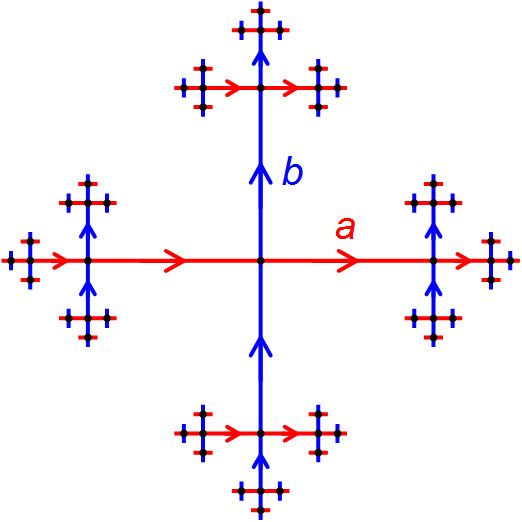 | ||
In mathematics, the Gromov boundary of a δ-hyperbolic space (especially a hyperbolic group) is an abstract concept generalizing the boundary sphere of hyperbolic space. Conceptually, the Gromov boundary is the set of all points at infinity. For instance, the Gromov boundary of the real line is two points, corresponding to positive and negative infinity.
Contents
Definition
There are several equivalent definitions of the Gromov boundary of a geodesic and proper δ-hyperbolic space. One of the most common uses equivalence classes of geodesic rays.
Pick some point
We say that two geodesics
The Gromov boundary of a geodesic and proper hyperbolic metric space
Topology
It is useful to use the Gromov product of three points. The Gromov product of three points
Given a point
These open sets are just the set of geodesic rays which follow one fixed geodesic ray up to a distance
This topology makes the Gromov boundary into a compact metrizable space.
The number of ends of a hyperbolic group is the number of components of the Gromov boundary.
Properties of the Gromov boundary
The Gromov boundary has several important properties. One of the most frequently used properties in group theory is the following: if a group
One of the most important properties is that it is a quasi-isometry invariant; that is, if two hyperbolic metric spaces are quasi-isometric, then the quasi-isometry between them gives a homeomorphism between their boundaries. This is important because homeomorphisms of compact spaces are much easier to understand than quasi-isometries of spaces.
Examples
Cannon's Conjecture
Cannon's conjecture concerns the classification of groups with a 2-sphere at infinity:
Cannon's conjecture: Every Gromov hyperbolic group with a 2-sphere at infinity acts geometrically on hyperbolic 3-space.
The analog to this conjecture is known to be true for 1-spheres and false for spheres of all dimension greater than 2.
